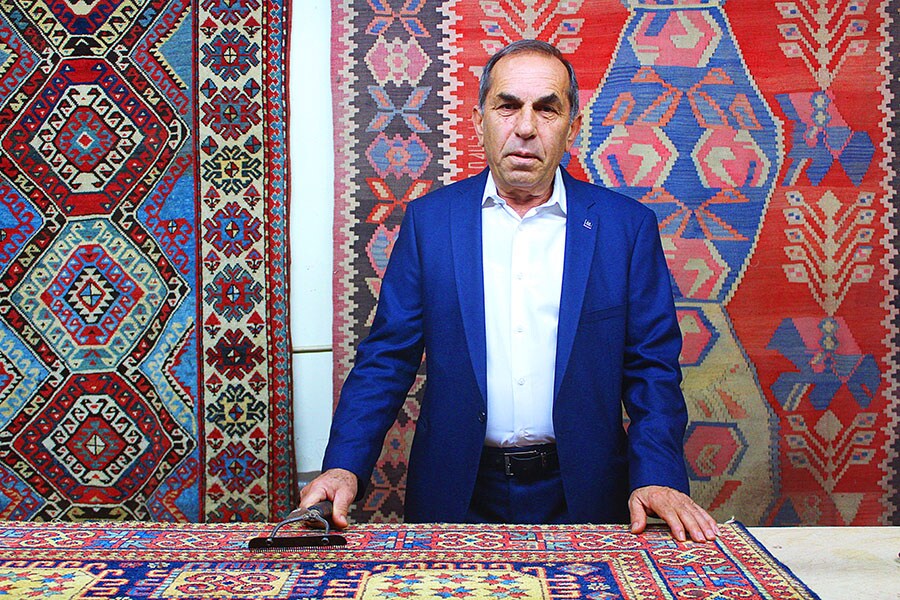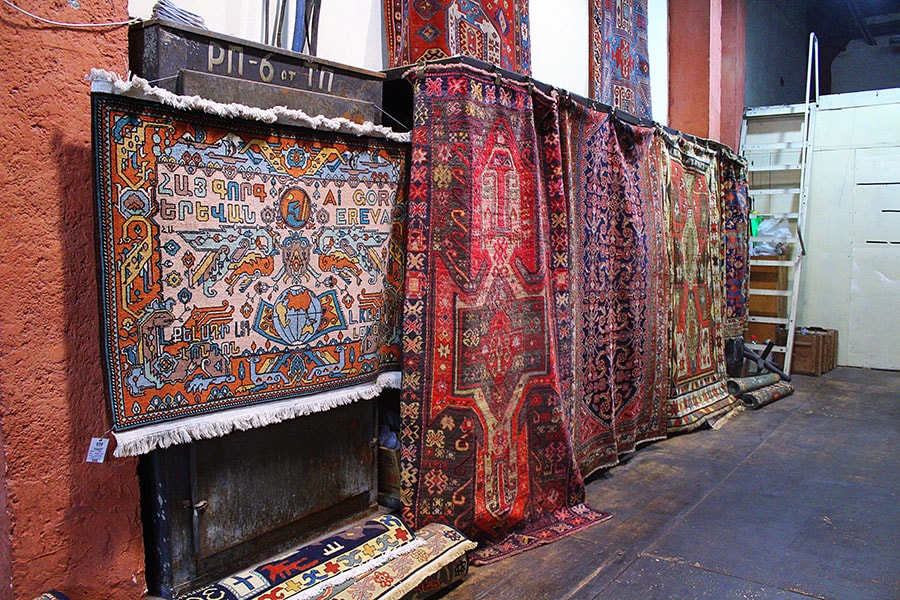
More than just a craft, in Armenia carpet-making is a tapestry of the country's rich heritage
Megerian carpets grace the floors of renowned churches in the world and the homes of esteemed figures, including the Queen of England, and presidents of many nations
 Raffi Megerian, the third-generation owner of Megerian Carpet Cultural Complex Image: Veidehi Gite
Raffi Megerian, the third-generation owner of Megerian Carpet Cultural Complex Image: Veidehi Gite
Nestled on Madoyan Street, a mere 10-minute drive from Republic Square, the bustling heart of Yerevan, the Megerian Carpet Cultural Complex houses a factory, a museum and a culinary school, all of which offer a glimpse into the world of 100-to-400-year-old Armenian rugs and carpets. In Armenia, the art of carpet weaving has been passed down through generations, each stitch preserving a thread of the country’s rich heritage, and the Megerian family stands as a testament to this enduring tradition, proudly perpetuating its legacy for all to admire.
The Megerian Carpet Factory was established in 1917 in New York City by Hovannes John Megerian, the grandfather of today’s owners. Back then, Megerian was involved with washing, buying and selling, and repairing of antique rugs. Three decades later, they boldly ventured into reproduction. The company was passed on to his children and in the 1970s they opened factories all over the world, though now they only have two—in New York and Yerevan. In 2002, the Megerian family acquired Aygorg Union, a Soviet-era rug-weaving company in Armenia that used chemical dyes and the Persian one-and-a-half knot technique. They completely revamped the company's production methods, switching to all-natural organic dyes and the Armenian double knot technique, the world's oldest knotting technique. The Armenian double knot technique, in contrast to the more common Persian one-and-a-half knot technique, only becomes tighter as it is pulled.
Fast forward to today, the company is one of the biggest makers of traditional Armenian rugs, whose motifs and designs whisper echoes of centuries past. They also make vast rugs, some reserved for momentous occasions, others that grace the halls of presidential palaces, churches, and other important landmarks. And it is here, within the walls of the complex, that Megerian’s craftsmanship and artistry unite in a symphony of colours and patterns, where one can marvel at the making of unique carpets and even buy them.
 The Megerian Carpet Factory Museum Image: Veidehi Gite
The Megerian Carpet Factory Museum Image: Veidehi Gite
At the entrance, Raffi Megerian, the third-generation owner of Megerian Carpet Cultural Complex, directs our attention to an Armenian alphabet door gracing the entrance. He highlights the uncanny resemblances between the Armenian and Indian Sanskrit alphabets and the interconnectedness of cultures. Stepping into the confines, the interiors pulsate with earthen pots, antique tapestries, and a display of coloured wool encased in a glass case. The sheer magnificence of the vintage carpets that grace the floors in room after room of the museum make you ponder if you can even walk over them. But Galina, the museum guide assures us, “There is an Armenian saying that the carpets are meant to be walked upon. We clean these rugs once every six months with cold water and a special soap which is made of natural oils.” Megerian’s renowned designs find their origins and inspiration in these ancient carpets, which serve as both the wellspring and blueprint. In doing so, they proudly preserve the rich tapestry of Armenian heritage.













